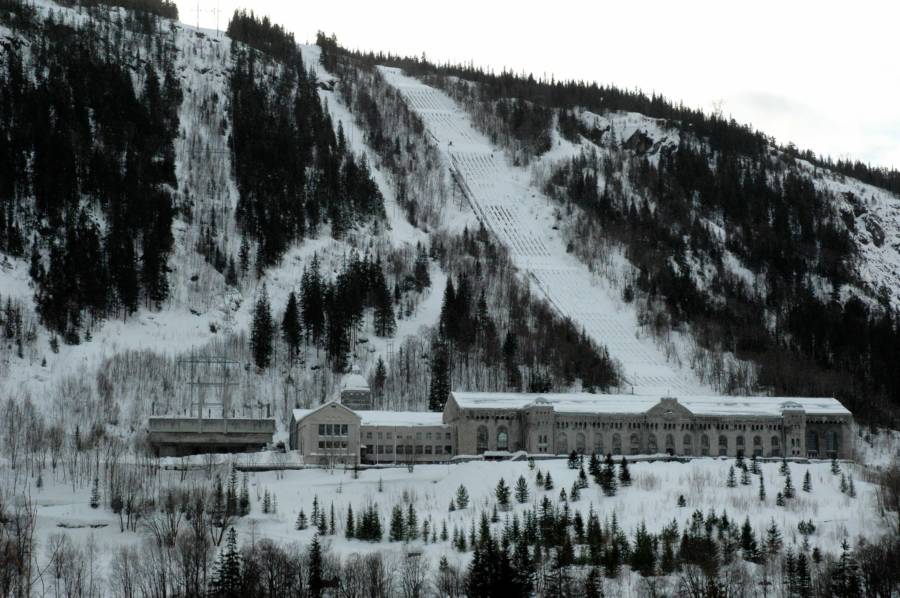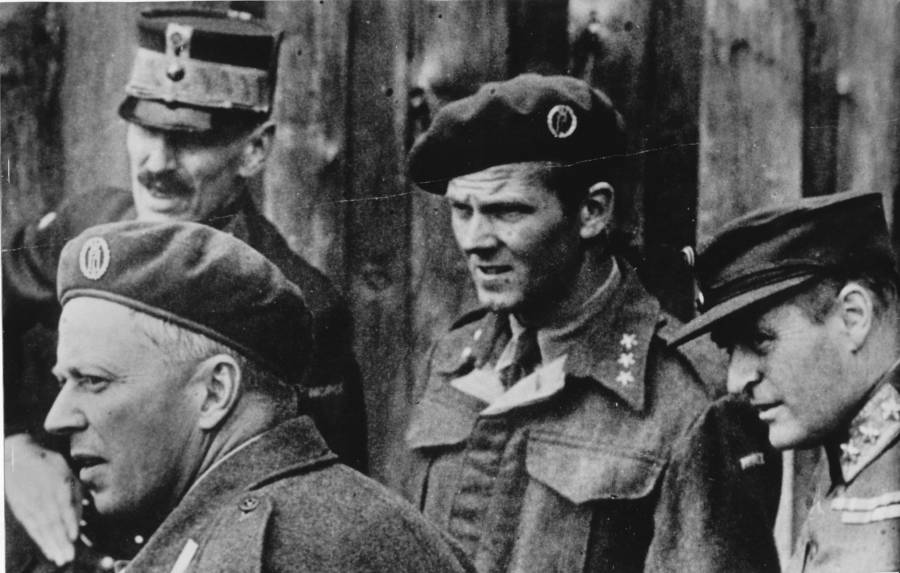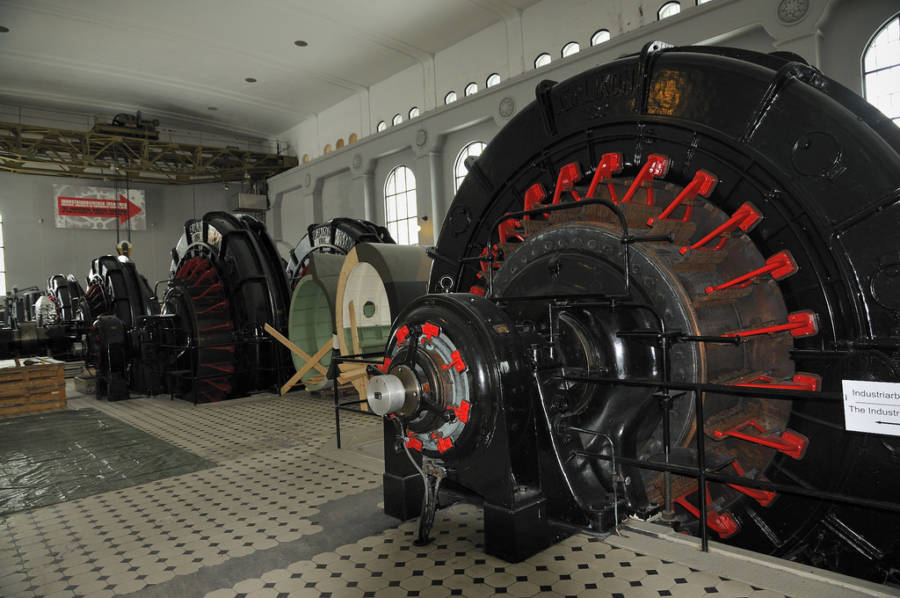
How a few largely forgotten men may have saved the world.

Wikimedia CommonsThe Vemork heavy water plant in western Norway, the site of the Allied operation that may have saved the world from the Nazis.
During World War II, the Allies carried out well-known operations like the D-Day invasion that lead to the defeat of the Third Reich. What you may not know however is that a small, intrepid team of Norwegians may have saved the world from Nazi domination.
Germany conquered Norway in 1940 while the rest of Europe appeased Adolf Hitler’s Nazi regime. Although Norway may not seem like a strategic target, Hitler wanted one very important facility under his control.
The Vemork heavy water plant sat 100 miles west of Oslo in a frozen landscape on the edge of a cliff near the town of Rjukan. Heavy water is unique in that it contains a neutron in its nucleus as opposed to just one proton, and is a key ingredient needed to manage the chain reaction needed to create a nuclear bomb.
The only place in the world that produced enough heavy water for a fission reaction was Vemork. A dedicated team of scientists, led by the brilliant chemist Leif Tronstad, built a plant in the early 1930s to produce ammonia for fertilizer and heavy water. Tronstad simply wanted to learn more about the properties of heavy water and what it could do while the fertilizer production earned the revenue.
The strategic value of Vemork changed once the Germans discovered nuclear fission in 1938. Hitler then needed the facility to try to beat the Allies to an atomic bomb. It was a race against time because he knew that German scientists who escaped to America could help his enemies build a bomb first.
In April 1940, Germany invaded Norway. Tronstad fought against the Germans and then went back to teaching at Trondheim University. But in secret, while he taught, Tronstad was plotting the destruction of the very plant he had built.

Wikimedia CommonsLeif Tronstad (foreground) with King Haakon VII of Norway (directly behind Tronstad) in 1944.
Tronstad joined the underground resistance movement in Norway. He fed the Allies information on Germany’s interest in the heavy water plant. The Americans were ahead of the Germans in their race to create a bomb, but the Allies didn’t want to take any chances. After a year, Tronstad realized what he needed to do. The plant needed to be destroyed and his inside information was key to the plan’s success.
Constant aerial bombing of the site wouldn’t work because the basement of the plant was the key to the operation. The basement was deep underground and any bombs the Allies had wouldn’t touch it. The plant had to go down from the inside.
In the summer of 1941, Tronstad fled his home and escaped to London, leaving his wife and children behind. He then began training with a group of Norwegian commandos recruited by Norway’s special forces and Britain’s Special Operations Executive. Tronstad himself was too old to take part in any military operation, but the young commandos would have been nowhere without his information.
Rigorous training for the mission to sabotage the plant, a mission now called Operation Gunnerside, took months. The commando team first spent weeks camping in the cold in Scotland. They learned to ski over treacherous terrain, hunt food in the wild, and survive with little-to-no provisions.
The team, led by 23-year-old Joachim Ronneberg, parachuted into the region surrounding Vemork in October 1942. They spent months gathering reconnaissance about German guards, gun placements, and planning how to get inside while camping on the surrounding plateau. The team had to hunt and eat reindeer to survive while melting snow for water.
Getting to the plant was no easy task. The only access was a single-lane suspension bridge, and the nine commandos would be gunned down by German troops before getting close enough to the plant. The hillside surrounding the plant was a minefield laid by the Germans. The third choice was to climb up the treacherous cliffside from a river 500 feet below the plant.
Ronneberg, who had no military training before his stint with Operation Gunnerside, and his team decided to ascend the cliff on the night of Feb. 27-28, 1943. It was freezing cold in the dead of winter and they had to be absolutely silent.

FlickrInside the Vemork heavy water plant, now a museum.
The commando team still had some obstacles to overcome after getting up the cliff.
The original plan was to infiltrate the plant through the basement door, but that was unsuccessful. Thanks to Tronstad’s intelligence, the team wasn’t out of options yet. The explosive unit got in through a hole in the wall and got down to the basement. There they placed their charges and got out as the rest of the team took out the German guards monitoring the plant.
The Germans had no idea what happened until it was too late. They heard the explosions, but the front door was locked and no one saw any suspicious movements. Guards stood around in a daze wondering what to do.
By the time the Germans realized what had happened, the team was free. Every commando survived. The operation effectively ended Germany’s chances to create an atomic bomb.
Tronstad never saw his family again. He parachuted into Norway as part of Operation Sunshine to take back Norway from the Germans. He was killed on March 11, 1945 while interrogating a Nazi prisoner.
Ronneberg, the leader of the commando team, is the last surviving member of the nine-man unit. He is 98 and lives in Norway.
Today, Vemork stands as a monument to Norway’s industrial prowess as the Norwegian Industrial Workers Museum. On a lonely plateau in the middle of nowhere, this stone structure stands as a silent sentinel to the amazing work of nine young commandos and a brilliant scientist who rank among the greatest unknown heroes of World War II.
Next, read about how Nicholas Winton and Irena Sendler each saved scores of people from dying at the hands of the Nazis.

Leave a Reply